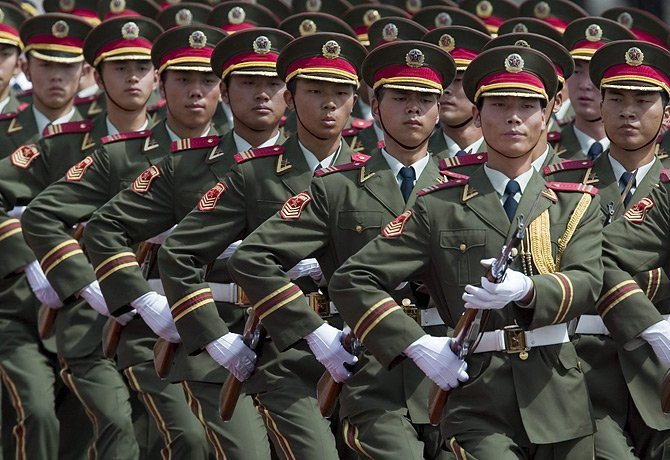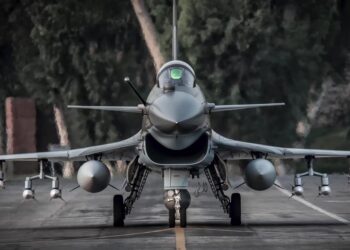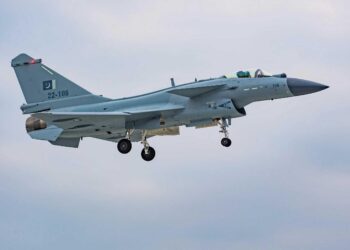India added itself to the short list of nuclear-armed countries with ballistic missile capability on Thursday. More importantly, though, the country’s successful test marks a new chapter in the developing Asian arms race. German commentators express deep concern on Friday.
Asia’s military might appears to be growing by leaps and bounds these days. Just last month, China announced a significant increase to its military spending. Since then, North Korea attempted (and failed) to launch a rocket into space, the United States began a joint military exercise with the Philippines and, on Thursday, South Korea tested a missile whose range includes all of North Korea.
The biggest headlines, however, have been reserved for India’s testing on Thursday of a long-range ballistic missile. Indian Prime Minister Manmohan Singh praised the successful launch, saying it was “another milestone” in India’s “quest for security, preparedness and to explore the frontiers of science.” Many observers, however, noted that it furthered India’s goal of becoming a counterweight to China’s military dominance in the region.
When the rocket, the Agni V, becomes part of the Indian military’s arsenal in 2015, the country will become the most recent member in the exclusive club of nations that possess ballistic missiles capable of delivering nuclear warheads — a group that includes China, Britain, France, Russia, the US and, it is widely assumed, Israel.
International reaction has been muted. Mark Toner, spokesman for the US State Department, said “I just would say that we urge all nuclear-capable states to exercise restraint regarding nuclear capabilities.” NATO head Ander Fogh Rasmussen added that the trans-Atlantic alliance does not see India as a threat.
Most attention, though, was focused on what appear to be Indian efforts to both catch up to China militarily and to underline its supremacy over neighboring Pakistan, which also has nuclear weapons. Only recently, India ordered 126 fighter jets from the French firm Dassault, one of the biggest arms deals in the recent past. Furthermore, New Delhi has purchased nuclear submarines from Russia and is seeking to modernize its tank fleet. In 2011, the country was the world’s biggest purchaser of arms.
All are measures which are reminiscent of China’s ongoing military build-up. But China on Thursday sought to play down the impression that an arms race was developing in Asia, with Foreign Ministry spokesman Liu Weimin saying that India and China “are not competitors but partners,” saying that they should focus on “working hard to uphold friendly strategic cooperation.”
Nevertheless, German media commentators on Friday take a closer look at the growing military rivalry in Asia.
Center-left daily Süddeutsche Zeitung writes:
“The arms race in Asia is starting to look ominous. The new economic powers in the region are expanding their armies, naval fleets and nuclear capacities as if it were the most natural thing in the world. Those who had dreamed that the atomic age would slowly fade away following the end of the Cold War must now confront reality — and China and India are leading the charge. The two powers — which are slowly turning their regional weight into global influence — are counting on the nuclear deterrent. India’s test underlines this intention.”
“As such, India — America’s most important ally in the region — has embarked on a course of confrontation with China. But China, for its part, already has the capability to target every city in India with a nuclear strike. Furthermore, despite the rivalry, the two countries have so far maintained sensible relations, aside from a few border disputes. The Indian missile test will not change that for the time being, and the immediate reactions from Beijing were subdued. But the long-term consequences of the arms race could change the region permanently. The danger is real that each missile test could provoke a reply and the arms race could accelerate out of control.”
“All indicators point to the fact that Asia will have a huge impact on the 21st century. The global order, however, will not necessarily become safer as a result. The old bi-polarity is being increasingly replaced by multiple poles of power, and the Asian powers are increasingly underlining their ambitions with missiles and a greater focus on military might. An end to the arms race is not in sight. Even if the US wanted to, its influence in Asia would no longer be enough to slow this development.”
Center-right daily Frankfurter Allgemeine Zeitung writes:
“It seems doubtful that India will in the near future … attempt to catch up with China across the board militarily. But the rhetoric from the Indian government and the public which accompanied the launch should give us pause. No longer are they attempting to give the impression that the step is not aimed at China.”
“The first official reaction from Beijing, to be sure, was pointedly subdued. But one can be sure that this won’t be the final word. There are radicals in China as well. It is impossible to say just how much influence they have on the country’s political leadership, particularly in a year in which the party and the state must accustom itself to new leaders. China is clearly ahead of India militarily, which makes it easy to maintain composure. But Beijing does not want to be overtaken by India. And for the time being, the Chinese economy is certainly strong enough to embark on an arms race with Asia’s second potential global power.”
The Financial Times Deutschland writes:
“It’s a show of strength in the struggle for regional supremacy. A war between India and its big rivals China or Pakistan can’t be expected in the near future. But the new missile is still cause for concern because the arms race between the three nations has gained palpable momentum. Neither Beijing nor Islamabad will stand idly by as India arms itself. It could lead to an Asian arms race similar to that witnessed during the Cold War, when one side fell into ruin in the end. And Asia’s developing nations can afford it even less than those industrialized European nations could back then.”
“The logic of the arms race also hides some socially explosive elements. One-third of the world’s population lives in China, India and Pakistan — many of them below the poverty level. India and Pakistan, in particular, face great challenges in keeping religious fanatics in check. High unemployment and insufficient social security are driving young people into the arms of radical terrorist groups. The governments would do better to address these problems instead of increasing their military budgets.”
Conservative daily Die Welt writes:
“There is much movement on the multi-dimensional, Asian chess board. Just a few weeks ago the United States distinctly said that they are, and plan to remain, players in this game. But amid all the saber rattling, the basic structure of this chessboard remains stable so far, with the exception of Pakistan, which is plagued by internal fighting.”
“All of the Asian powers are playing their own game. … Unlike the Cold War, this is a multi-polar system, where arms controls and trust-building measures are foreign words. It is an Asian power system unlike any ever seen before — an open-ended one. And, incidentally, one without any kind of participation from the Europeans.”
Left-leaning daily Die Tageszeitung writes:
“India isn’t joining an arms race. It is arming itself but slowly. Its military budget is at most a quarter of China’s. It is as far behind China as China is behind the USA. That’s why nobody in Delhi wanted to celebrate the rocket test as a challenge to Beijing’s power. Rather, the test resulted in a naïve outbreak of patriotic pride: Finally, the country sees itself as belonging to the club of nuclear powers.”










